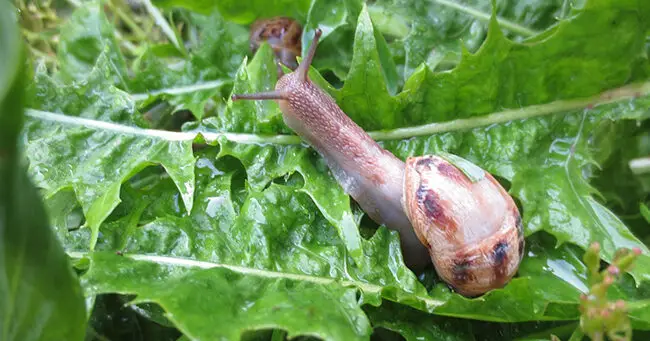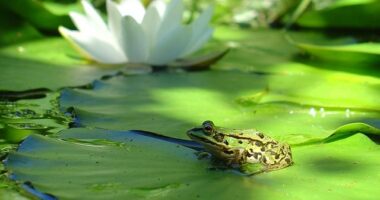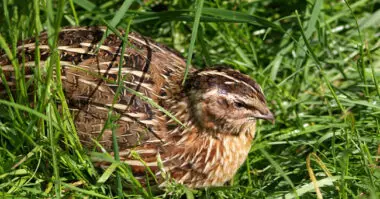You still see snails as real undesirables in the garden? Thanks to this sheet, you will learn that they play an important ecological role in the balance of your garden and that they can be very good companions!
Contents
Why be interested in snails?
Even if the most common ones enjoy salad leaves or cabbage leaves from the garden, some less common species in our gardens enjoy various corpses, earthworms, slugs and insect eggs or larvae. Other snails pass as much unnoticed by recycling plant debris, dead wood, mosses and fungi even poisonous. An appetite in the service of nature!
Why you should attract snails in your garden
To have snails in its garden indicates that your ground is of good quality, because the snail detects very quickly all the traces of pollution.
With our great regret, the snail feeds on our salads and our cabbages, but it can return many services to us according to its species.
Some feed on earthworms, slugs, larvae eggs and various corpses.
Others prefer plant debris, dead wood, moss and fungi (even poisonous ones).
The snail thus participates in the balance of the garden.
Who are they?
The snails are characterized by the size (being able to reach nearly 6 cm in the snails of breeding like the Small gray, Gryptomphalus aspersus, or the Snail of Burgundy, Helix pomatia!), the shape and the color of their shell.
Snails are active animals especially at night or on rainy days. They often act out of sight and it is generally in the early morning that one observes the results of their activities (holes in the leaves and slime trails that they secrete) while the culprits protect themselves from the dryness in the hedge, the wasteland or in the ground or under a wooden plank, well sheltered in their shell! The snails hibernate during the winter until spring. They settle down in the shelter of the bad weather, under a stone, a tile, in the heap of compost or still under the tall grass of the wasteland…
Before entering slowed down life, the snail takes refuge in its shell and this time, closes it hermetically! The snail is hermaphrodite* and in the beautiful season, after reproduction, each individual sinks into the ground to lay its eggs. If they are not eaten by their many predators, they become small snails which go up to the open air. They can live between 5 and 10 years and the shell grows with them: no need to move!
How to live with them?
* First of all, it is important to establish (or re-establish) a natural balance between predators and prey. Plant a hedge that is attractive to birds. Some people love snails and eat them in one bite! The field hedge will also serve as a shelter for other predators, such as hedgehogs or ground beetles, which will naturally regulate snail populations, but also slugs or other animals that can damage your crops.
* To preserve this balance, avoid using pesticides to favour all natural predators.
* Place a tile or a wooden board near the places devastated by snails. The snails will take refuge underneath during the day and you will only have to move and return the “trap” to offer its contents to the predators or let the snails leave for new adventures!
* Pour ash or sawdust powder over 1 cm all around your plants. You will thus prevent the snails from reaching your cultures and you will not deprive their predators of a healthy feast (because not poisoned by chemicals). Renew these “shields” after each rainfall.
The reproduction of the snail
Curiosity, gift or whim of nature, the snail is hermaphrodite. It has a male organ and a female organ which intervene one after the other in the process of the reproduction. They must be two to reproduce.
- Myopic and deaf, the snail locates a future partner with its tentacles following slime trails.
- When they are chosen, the snails begin a very sensual nuptial dance during which they embrace each other for a long time.
- They are stabbed violently with a pointed organ covered with mucus called “the sting of love”.
The sting of love
The mucus of the love sting is loaded with hormones that ensure the survival of as many sperm as possible and transmit the genetic heritage.
The baby snails
- At the time of the coupling which can last about ten hours, the snails penetrate and fertilize each other.
- A few days later, they dig the ground each side to lay between 20 and 100 eggs.
- The hatching takes place two weeks later.
- The baby snails are born with a translucent soft shell.
- They are adults around the age of two years.
- A snail can lay six times a year.
How to regulate the snail population
- Attract birds to our gardens, as some (like the Thrush) love snails.
- Place a wooden plank or a tile in the places invaded by snails. During the day, they will take refuge underneath and you will only have to move them to free them at the place of your choice or to offer them to their predators.
- Have ash, sawdust or coffee grounds around your crops. The snails will not be able to reach them.
- Its main predators are hedgehogs, birds, toads, frogs and humans.
Summary
In our gardens, everything is a question of balance, each tenant has his or her own use.
Welcoming while regulating the snail population in our plots can provide us with valuable services. We explain why you should appreciate them.








